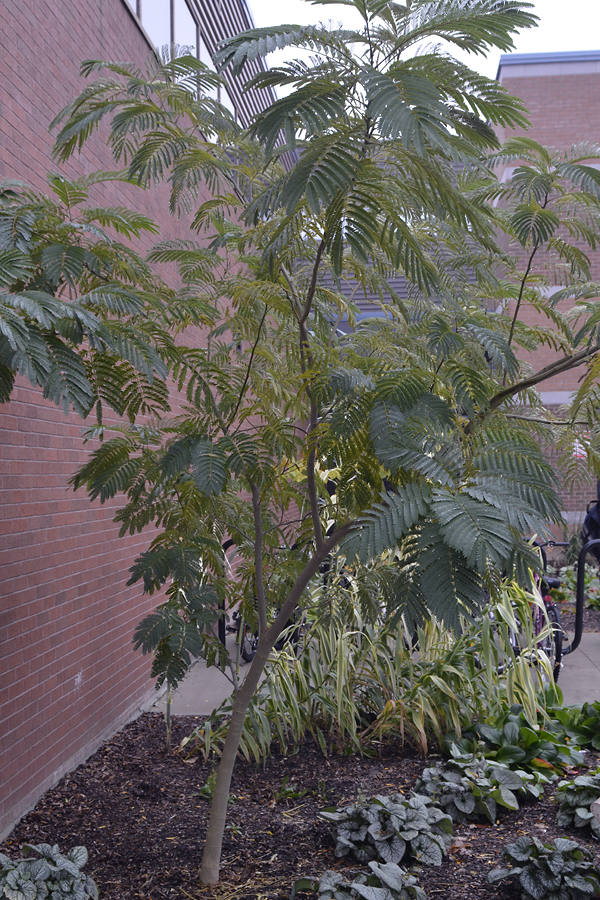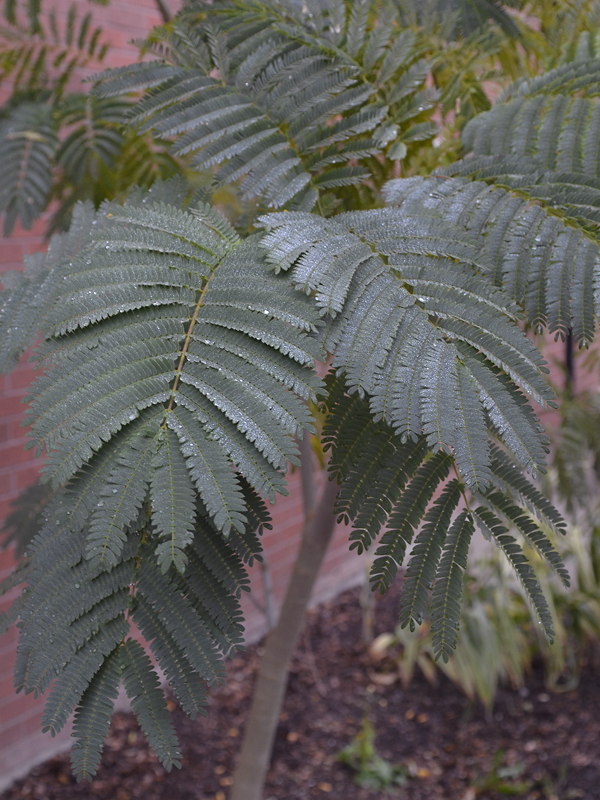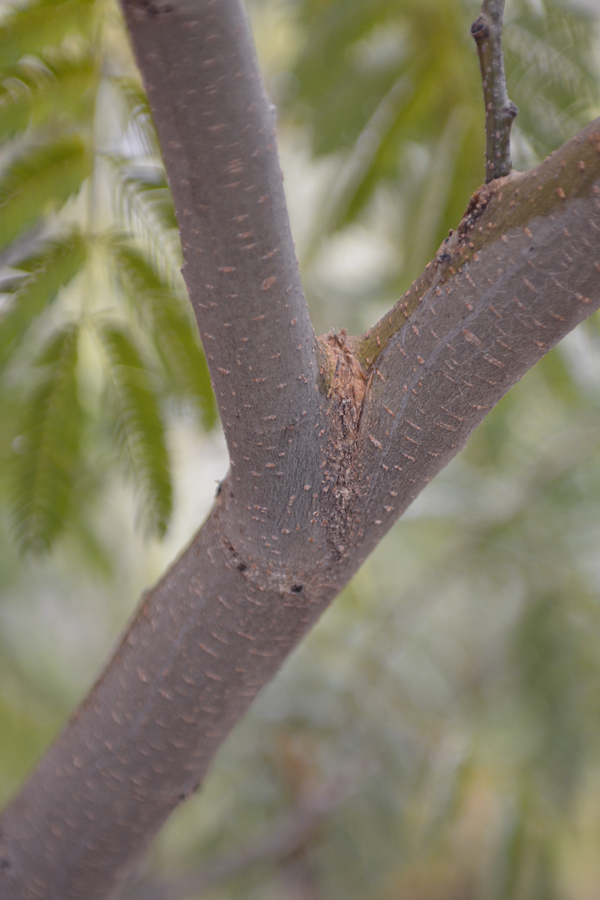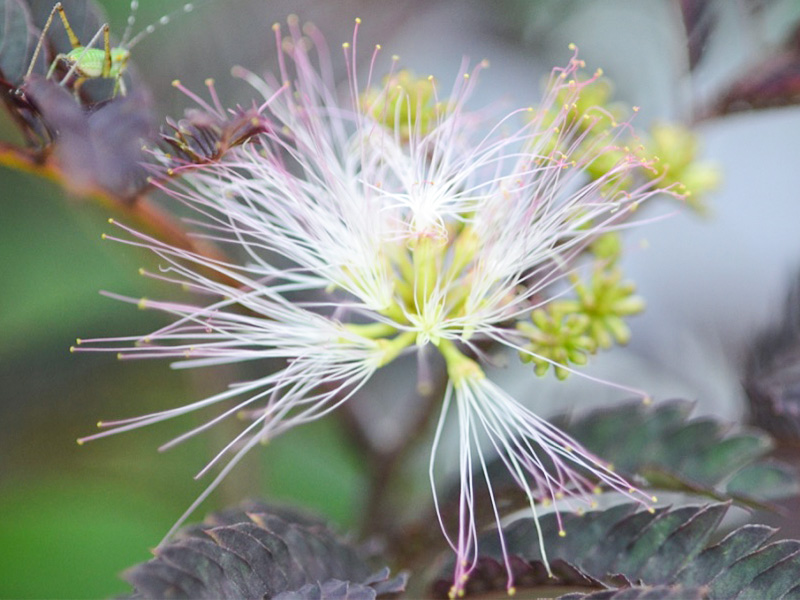
Woody > Albizia > Albizia julibrissin > Albizia julibrissin
Albizia julibrissin
Mimosa or Silk Tree
Origin: Iran to Japan. Genus named for Filippo degli Albizzi, Italian naturalist, who brought many seeds back to Florence from an expedition to Constantinople in 1749.
Mike's
Opinion


"
A problematic tree in the southern reaches of the continental United States since it is considered an invasive species but still for us northern gardeners a desirable plant and one that can add a soft tropical touch to those gardens where it is hardy. I have planted it and lost it many times in zone USDA 5 and will continue to attempt to grow it more for its foliage here since the season is seldom long enough to see it bloom.
Michael Pascoe, NDP., ODH., CLT., MSc. (Plant Conservation)
"
| Family |
| Fabaceae |
| Genus |
| Albizia |
| Species |
| julibrissin |
| Category |
| Woody |
| Type |
| Tree (deciduous) |
| USDA Hardiness Zone |
| 7 |
| Canadian Hardiness Zone |
| 6b - 7a |
| RHS Hardiness Zone |
| H6 - H5 |
| Temperature (°C) |
| -18 - (-12) |
| Temperature (°F) |
| 0 - 10 |
| Height |
| 6 m |
Photographs
Description and Growing Information
Flowering Period
| Cultivation |
| Grow in well-drained, moisture-retentive soils in full sun. |
| Shape |
| Domed to flat-topped crown. |
| Growth |
| Fast |
| Habitat |
| Has naturalized to the Southern United States, and now occurs as a weedy species much further north. |
| Bark/Stem Description |
| Bark is smooth and pale grey-brown. |
| Leaf Description |
| Leaves are gracefully bipinnate, with leaflets to 1.5 cm in pairs of 20-30. |
| Flower Description |
| Flower heads to 3.5 cm in diameter, and are showy, flushing lime green to ivory to pink. |
| Fruit Description |
| Fruit are oblong, 20 x 2.5 cm, and laterally flattened. |
| Notable Specimens |
| The Gardens of Fanshawe College, London, Ontario, Canada. |
| Propagation |
| Propagate by root cuttings in spring, or by seed, pre-soaked in tepid water for about 12 hours, or by semi-ripe cuttings in a closed case with bottom heat. |



